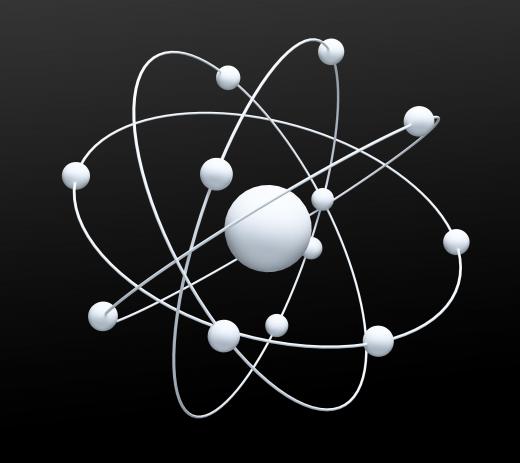What Is Atomic Emission Spectroscopy?
Atomic Emission Spectroscopy (AES) is an analytical technique that measures the energy of atoms in a sample. Central to this method is the addition of energy to a sample to see what happens to the atoms already present. Individual elements produce slightly different light energy beams after the extra energy temporarily alters the atom. The reader portion of an atomic emission spectroscopy machine recognizes light energy coming from the sample, and the computer portion of the machine calculates the concentrations of individual elements in a sample from the wavelength(s) of the incoming light.
Each element in the world, at its simplest, is a single atom, although many occur in nature as multiple atoms stuck together or in combination with other elements. Atoms are tiny particles that typically have little particles called protons and neutrons stuck together in a central core known as a nucleus. Even smaller particles called electrons circle the nucleus continuously.

Electrons move around the nucleus in a specific way. In a similar manner to hula hoops of different diameters, the electrons circle only in specific diameters, with some in smaller diameter orbitals and some in larger orbitals. Usefully for atomic emission spectroscopy, however, each electron can jump to a higher orbital if enough environmental energy is present.
Samples for AES analysis often contain mixtures of elements and compounds such as soil, for example. An atomic emission spectroscopy machine, however, can only read individual atoms. Therefore, when an analyst prepares a sample for AES testing, he or she has to break up all the compound molecules into free atoms. Typically, the analyst turns the sample into an aerosol by adding energy from sources like furnaces, lasers or sparks.
The extra energy from the source that breaks up the sample is also the energy that acts on the electrons in the sample elements. With the extra energy, the electrons jump up into higher orbitals. When they fall back down after the energy dissipates, the energy they had stored from the source emits as light photons. Photons are like little packets of energy.
Every spectroscopy machine has a detector that recognizes the presence of energy and passes that information onto a computer program that converts the raw data into clearer descriptions. In the case of an AES machine, the detector reads the presence and intensity of the individual photons. Intensity relates to light wavelength, and each element present in the sample has a distinctive array of photons that would produce specific wavelength readings. From the photons, therefore, the machine can figure out which elements, and how much of each, are present in an individual sample.
Another method of analyzing elemental composition of samples is Atomic Absorption Spectroscopy (AAS.) This works on the same principles as AES, but instead of reading the emitted light from an energized sample, the machine reads the amount of light energy that the sample absorbs as an indication of the type, and amount of electrons in the sample. AAS is suitable for gas samples.
AS FEATURED ON:
AS FEATURED ON:











Discuss this Article
Post your comments